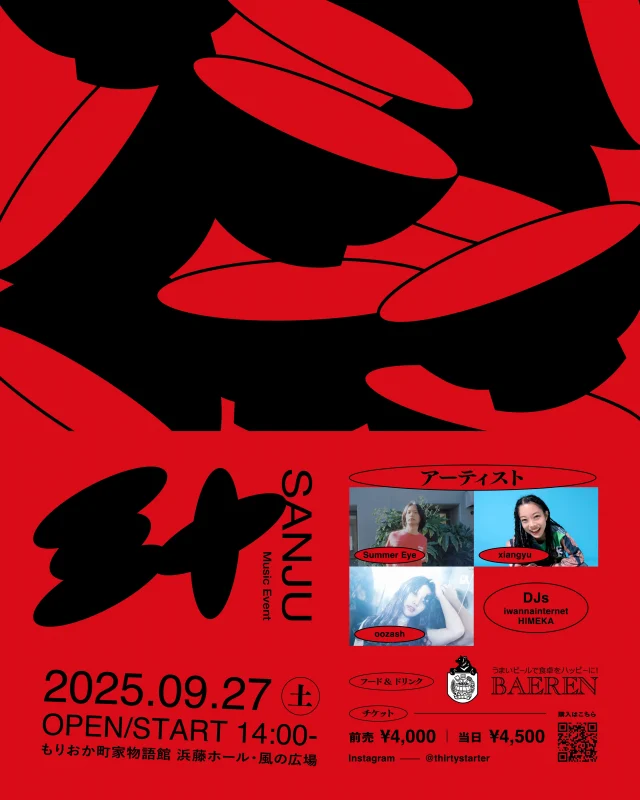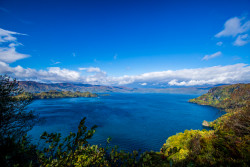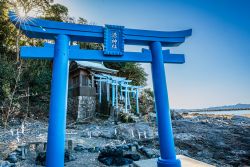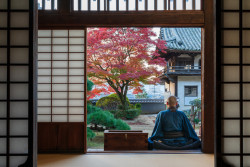
Summer in the city is sweltering. The Japan Meteorological Agency has announced that the heat will stay in Tokyo until October! Among the urban canyons, it’s hard to imagine anywhere that isn’t stiflingly humid or uncomfortably hot. But such places do exist. Just look to the north, where you can leave the air-conditioned convenience stores and cries of “atsui desu ne?” (it’s hot, isn’t it?) behind and find some respite from the unwavering summer heat. Hop aboard a train in Tokyo, grab a cold one and you’ll be hanging out on the beach with the surfers or hiking in Hokkaido’s national parks before you know it.
Here’s a guide for your journey to the deep north, taking in history, culture and a whole host of cooling natural spots to check out along the way.
Morioka, Iwate -1 night- SANJU – Music Event
The SANJU Music Event brings together an unmissable lineup: Summer Eye, delivering dreamy Tokyo indie vibes; xiangyu, whose playful energy and bold performances always leave a mark; and oozash, a rising local favorite adding Morioka’s own flair. Keeping the energy alive on the decks are DJs iwannainternet and HIMEKA, spinning sounds that bridge Tokyo’s cutting-edge scene with Morioka’s creative spirit. Beyond the music, guests can savor locally brewed craft beer from Baeren Brewery, perfectly matched with the crisp Morioka autumn breeze — a refreshing northern escape from Tokyo’s lingering September heat.
This isn’t just a show — it’s a cultural exchange, blending the intimacy of Morioka’s atmosphere with the pulse of the capital’s underground sound.
And here’s a bonus: Morioka was named one of the world’s best places to visit by The New York Times. Now, alongside its food, scenery, and history, you can discover its thriving music culture too. There are stylish vintage clothing stores and record stores, as well as independent breweries in the city center. Don’t miss out on the famous wanko soba while you’re there! It’s a local noodle tradition where servers keep refilling your small bowl of soba noodles as soon as you finish.
Get tickets to SANJU here>>HOW TO GET THERE:
Take the Tohoku Shinkansen from Tokyo Station to Morioka Station (around 2 hours 15 minutes, from ¥14,000 one way). From Morioka Station, it’s a short walk or taxi ride to the Morioka Machiya Monogatari-kan (Haman Hall & Kaze-no Hiroba), the event venue.
SEVEN BEACHES -two nights-

I would like to say that here is the most beautiful spot in the whole country of Japan. — Poet Matsuo Basho upon visiting Matsushima Bay.
Leave the urban heat behind as you head north on the shinkansen, cutting through mountains and tiny rural towns on the way to Shichigahama. Translating to “seven beaches,” this seaside spot is a collection of villages that merged in 1899. Sadly, the small coastal community — jutting out into the southern part of Matsushima Bay, Miyagi Prefecture — was badly affected by the 2011 Tohoku Earthquake and tsunami but has since undergone much reconstruction. Today, with its rugged natural beauty, the scenic town remains a popular surfing spot with famous views and an ancient history to discover.
In the summer months, the recently rejuvenated Shobutahama Beach (Japan’s third-oldest swimming beach) attracts day-trippers from across Miyagi and is a relaxing place for a swim on a warm afternoon. Over at the nearby Azukihama Beach, surfers gather, while more secluded beaches can be found furthest along the coast. Walk up to Tamonzan: a viewpoint where you can see one of the four famous views of Matushima.
From Shichigahama, it’s a short distance to the center of Matsushima Bay itself. Scattered with over 260 pine-covered islands, sandy shorelines and the remains of hermit’s hideaways, Matsushima is one of the so-called Three Views of Japan. It is here that famous haiku poet Matsuo Basho stopped on his epic journey north in the 17th-century, writing in his travelog “Narrow Road to the Deep North”: “I would like to say that here is the most beautiful spot in the whole country of Japan.”
HOW TO GET THERE:
Take the shinkansen from Tokyo Station to Sendai Station (around two hours, from ¥11,090); walk five minutes to Aobadori Station and take the JR Senseki Line to Geba Station (25 minutes, ¥240). A local bus connects the Shichigahama area.
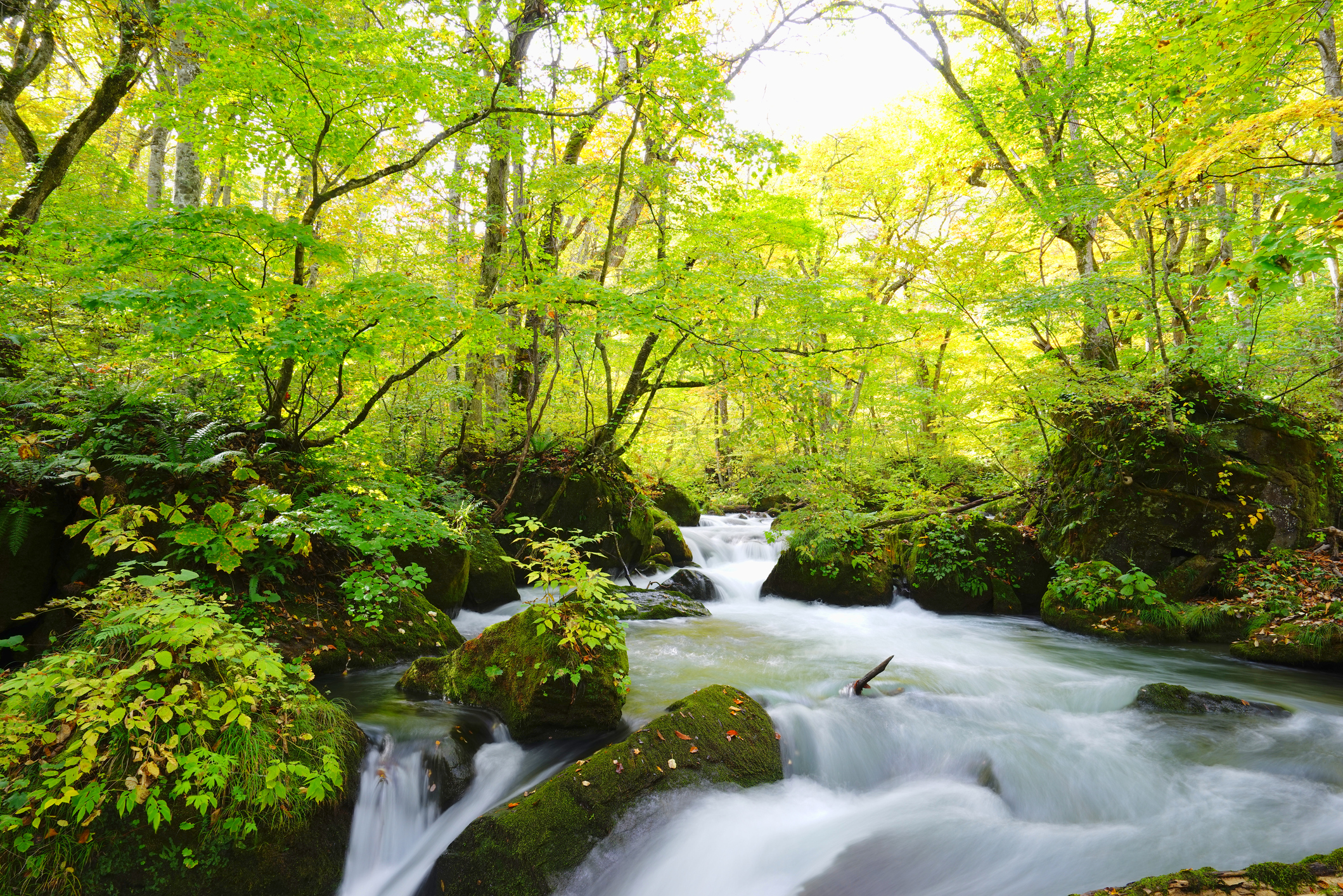
CONSIDER RENTING A CAR -two nights-
From Sendai, continue your journey up to the tip of Honshu. Famous for apples and its annual Aomori Nebuta Festival in August, Aomori is a great cooling summer destination. Spend a few nights here by the waterfront, and, if you aren’t in town for the festival, stop by the Nebuta no Ie Wa Rasse, a museum dedicated to colorful Nebuta floats.
For those with more time, consider renting a car to explore further afield, revealing the region’s hidden delights. A picturesque two-and-a-half hour drive along Mutsu Bay are the sacred wilds of Mount Osore (literally “Mount Dread”), believed to be one of the gateways to the underworld. Less than an hour’s drive from Aomori, you will find Towada-Hachimantai National Park, where you can hike in the mountains or kick back on the sandy shoreline of Lake Towada.
HOW TO GET THERE:
From Sendai take the shinkansen to Shin-Aomori Station and change for the JR Ou Line to Aomori (around two hours, from ¥11,420).
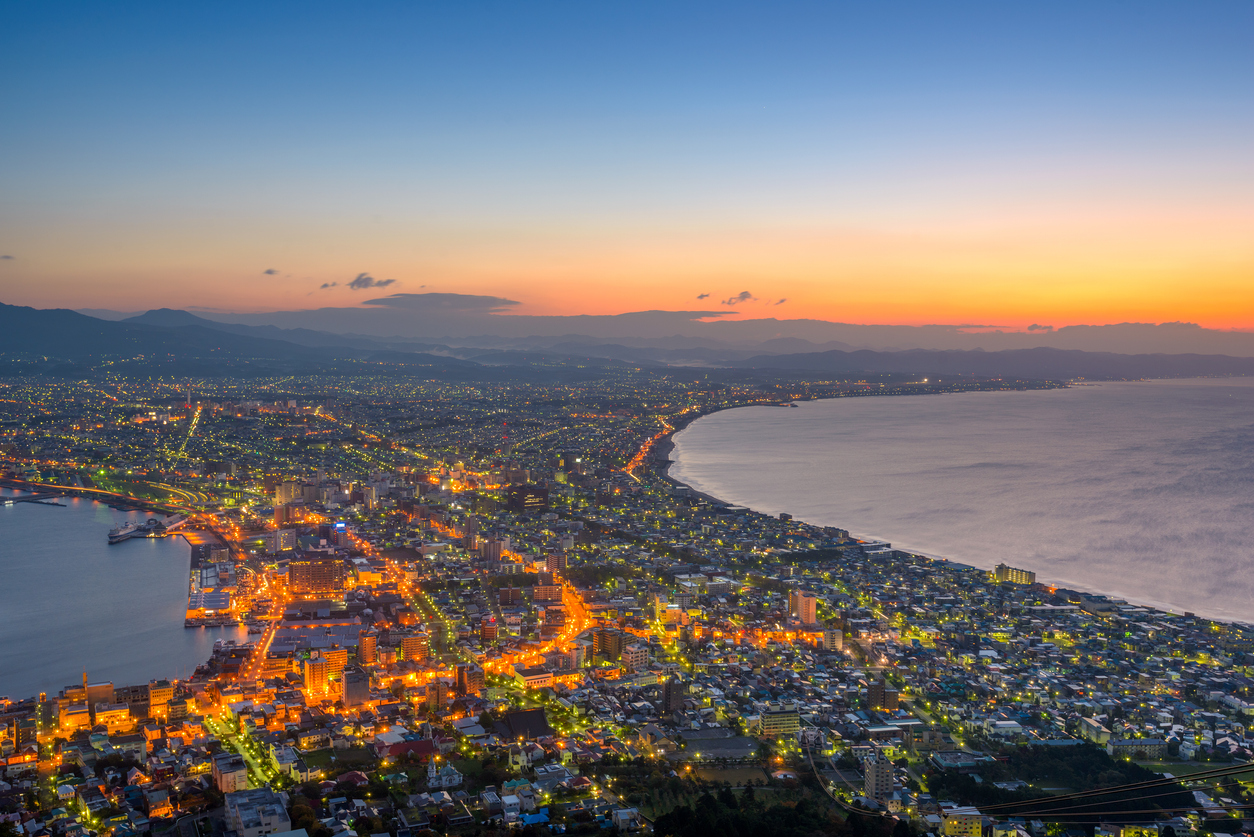
FOR SEAFOOD LOVERS -two nights-
Hop on the ferry to cross the Tsugaru Strait and you’ll reach Hokkaido. The port city of Hakodate is the ideal introduction to life in this northern prefecture. One of the first ports to open to foreign trade under the 1854 Kanagawa Treaty, remnants of Hakodate’s international trading heritage are peppered throughout the city.
A long the waterfront, early 20th century red-brick warehouses have been restored and now house a selection of stylish shops. Nearby, the steep streets of the Motomachi district, where Hakodate’s foreign residents once lived, are still scattered with old European buildings and churches, including the towering Hakodate Orthodox Church, founded by the Russian Consulate in 1858. Seafood lovers should wake up early and visit the Hakodate Morning Market. Opening at 5am, the market has fresh produce and food vendors to provide a tasty on the go breakfast as you stroll amongst the seafood stalls. Rest in the afternoon to save your energy for the end of the day when you tackle the 334-meter Mount Hakodate — or cheat and take the ropeway (round trip ¥1,500; one way ¥1,000) — for some famous glistening city views.
HOW TO GET THERE:
Take the Tsugaru Kaikyo Ferry from Aomori Ferry Terminal to Hakodate (90 minutes, from ¥2,000). Alternatively, take the shinkansen from Shin-Aomori Station to Shin-Hakodate-Hokuto Station (one hour, ¥7,720).
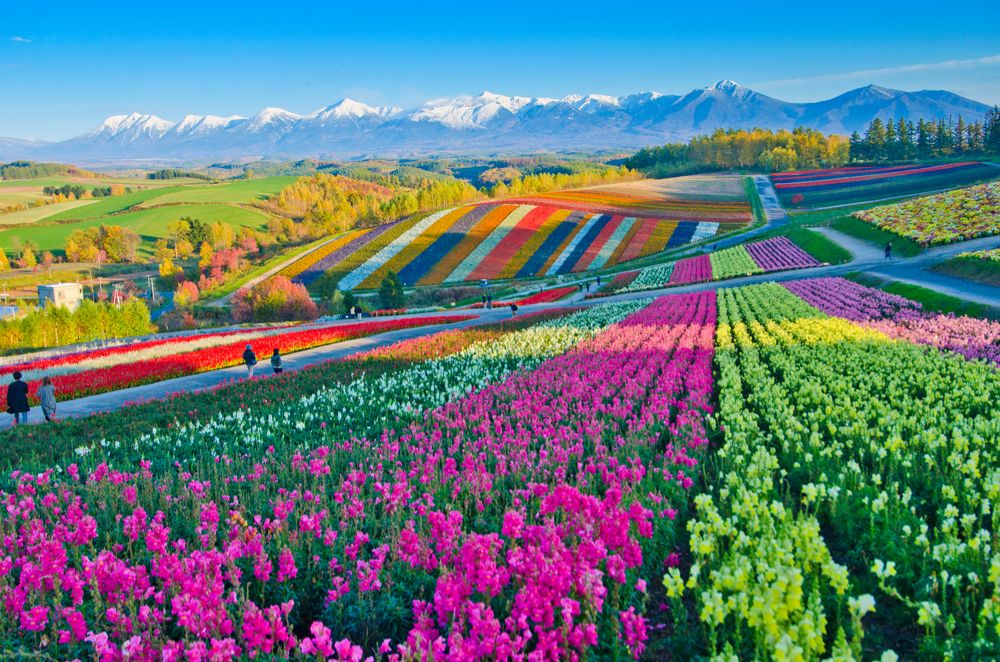
HOKKAIDO’S SECOND-LARGEST CITY -two nights-
Hokkaido’s second-largest city Asahikawa often gets overlooked in favor of Sapporo, but this fun-loving place is a compact, easy-to-navigate and interesting stop-off for a couple of nights. In front of the station, the one-kilometer long Heiwa-dori (Japan’s first pedestrianized street) is home to hotels, shops and eateries — a good place to base yourself.
First, fill up on a steaming bowl of the local Asahikawa ramen at Asahikawa Ramen Village and then head off to explore what the city has to offer. Founded by an Ainu chief, Kawamura Kaneto, the Ainu Memorial Museum has been working towards preserving Ainu culture for over a century. On sunny days the sprawling Tokiwa Park, on the banks of Ishikari River, comes alive with people enjoying their time off. With places to grab a bite and a calm boating lake, it’s hard to imagine the park becoming the hub of Asahikawa’s winter snow festival.
Half an hour away by train is the bucolic town of Biei. Sleepy throughout the year, in summer visitors flock here to drive scenic roads, stop by small farms and buy local produce. It’s also here that you’ll find Shikisai Hill — a well-loved flower garden that stripes the rolling landscape in magnificent seasonal blooms from late April to late-October.
HOW TO GET THERE:
From Abashiri Station take the Okhotsk-Taisetsu Line to Asahikawa Station (three hours, 49 minutes, ¥8,560). Once it’s time to return to summer in the city, take the bus from Asahikawa to Sapporo, change for the train to Hakodate and then catch the shinkansen back to Tokyo (11 hours, ¥30,060). Alternatively, catch a flight from either Asahikawa or Sapporo Airport to Haneda Airport (one hour 45 minutes, from ¥10,000).
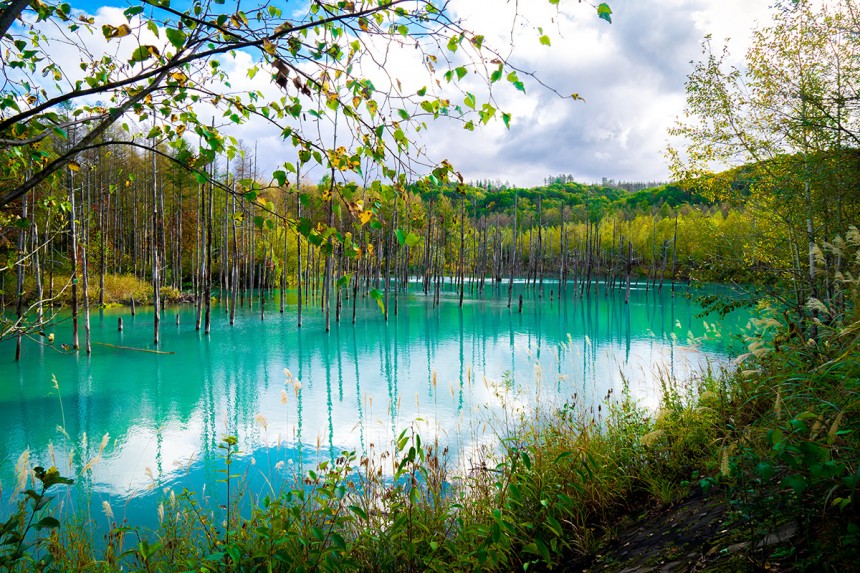
THE “BLUE POND” -two nights-
Home to Kushiro-shitsugen National Park, the nature surrounding this otherwise industrial port city of Hokkaido is stunningly beautiful. After a long train ride, walk through the buzz of the local station and book yourself into one of the handful of hotels nearby. The city’s welcoming nightlife awaits. Tucked away along small back alleys, such as Akachochin Yokocho, tiny izakaya serve up sushi and sake enjoyed over warm conversations with down-to-earth locals.
The following day, get up early and catch a Senmo Line train, alighting at Kushiroshitsugen Station deep in the national park. This vast open swathe of Ramsar-recognized wetland is the largest in Japan and was designated as such in 1987 in an effort to stop the creep of urban development. Close to this unmanned station is the Hosooka Marsh View Point. From here, hiking trails wind through the wilderness, offering chances to spot shika deer and the elusive Japanese cranes.
HOW TO GET THERE:
Hakodate Station take the Limited Express to Minami-Chitose Station, changing for Kushiro (around seven and a half hours, ¥16,020).

FILL UP ON NATURE -one night-
If you didn’t get your fill of nature at Kushiro-shitsugen National Park, don’t worry. The train from Kushiro to Abashiri that runs along the Senmo Line cuts through both Kushiro-shitsugen and Lake Akan National Park; trundling through the seemingly unending hinterland in a charming one-carriage train is an unforgettable journey. Don’t forget your camera— if you’re lucky you may even spot Japanese cranes as you watch out the window.
Arriving in Abashiri, located by the Sea of Okhotsk, you’ll be closer to Russia than Tokyo. The eastern Hokkaido town is a harsh, frozen place in winter, attracting tourists who come to ride on icebreakers that slice through ryuhyo (drift ice). But come summer, Abashiri offers some much needed respite from Tokyo’s summer heat. A short bus ride from the train station is Mount Tento. In August, its slopes are carpeted in 42,000 blooming flowers, transforming the ski resort into Hana Tento Flower Park. For something less man-made, Koshimizu Gensei Kaen is a 20-kilometer stretch of sandy coastline that is coated in wildflowers from June to August. Towards the end of the summer, samphire dramatically paints the shoreline of nearby Notoro Lagoon crimson.
HOW TO GET THERE:
From Kushiro Station take the Senmo Line directly to Abashiri (Three hours, ¥4,070).
Originally published July 2021 by Rebecca Saunders, edited and updated by Metropolis in September, 2025.
Love traveling Japan? Check out some of these spots!
Visiting San’in: Japan’s Sacred and Slightly “Pagan” Region
